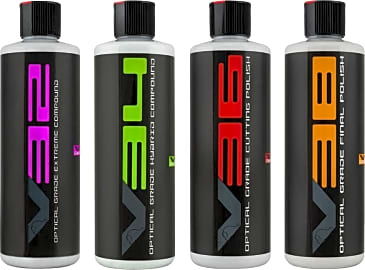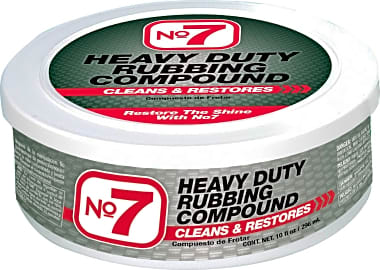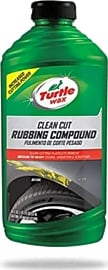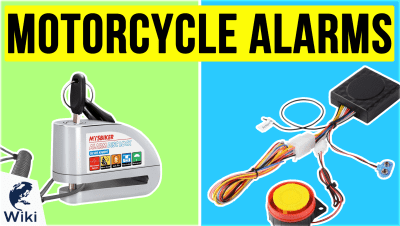The 10 Best Rubbing Compounds

This wiki has been updated 40 times since it was first published in March of 2016. Whether you work in a showroom or a detailing shop, or are simply passionate about your car's or boat's appearance, you'll want to keep one of these rubbing compounds on hand. They can quickly and easily remove scratches, swirls, oxidation, and water marks from your vehicle's bodywork and windows, so it always looks its best. Some are even great at clearing cloudy headlights, too. When users buy our independently chosen editorial recommendations, we may earn commissions to help fund the Wiki.
Editor's Notes
September 24, 2020:
Not too much has changed in the rubbing compound world since our last update, but we decided to make a few tweaks to keep everything up to par, like saying goodbye to Blue Ribbon Micro Cut, which remains a fine choice for moderate to heavy scratches, to make way for 3D One Correction. 3D One is a quality hybrid option still capable of removing heavy marks, but with the added benefit of an extended working time, no dusting, and a versatile formula that wipes off easily, even if it has been left to dry. It contains plenty of lubricants to keep the surface of your paint slick and keep it wetter for longer, and can be made more aggressive by choosing a wool buffing bad and less so with a foam one.
We removed Chemical Guys V32 to bring on the Chemical Guys V Line, a comprehensive correction kit that includes the extreme V32 compound alongside the company's V34 hybrid compound in addition to cutting and finishing polishes. It's a solid sample set for serious car owners looking to tackle a variety of issues and was engineered specifically for scratch-resistant and ceramic clear coats with special micro-abrasive technology for a lustrous and precise final result.
As always, we prioritized formulations that are free of fillers and additives that would feel right at home in professional detailing shops and ensured a range of options for light, moderate, and severe damage. We also kept Turtle Wax T-415 Premium around for those on a tight budget.
May 14, 2019:
Rubbing compounds come in a variety of potencies in order to address everything from mild defects and swirls to deep scratches, intense water buildup, oxidation, bird droppings, and more. We prioritized solutions that function without added fillers and silicone, which can damage a car's finish and create an uneven, shoddy appearance. We also opted for selections that were easy to apply, had an extended working time, and were simple to clean up. Value for money came after that.
For those new to using these products, we included Meguiar's Mirror Glaze Diamond Cut, which is less aggressive than many others, so it's more user-friendly for first-timers. On the other hand, Blue Ribbon Micro Cut is extremely aggressive and good for professional use. Boat and RV owners will appreciate 3M Marine Compound and Finishing Material and Meguiar's Marine One-Step for their efficiency on gelcoats.
While we recognize the positive aspects of Star Brite Liquid, we decided to scrap it due to the fact that it hazes rather quickly and can become difficult to remove, which makes the application process a hassle. For a more streamlined application and easier cleanup, we added Chemical Guys V32 in its place. 3M Perfect-It EX continues to command a top spot due to its exceptionally effective unique formula. It also happens to be engineered for myriad user conditions and climates, including the hot and humid, so application is simple and it won't wear down as easily as the competition.
Special Honors
Wolfgang MetallWerk Aluminum Compound Woebegone aluminum and other bare metals can be a challenge to restore, requiring an intense abrasive polish to remove rust and stains. While complete restoration is a multi-step process, you can get started with this compound from Wolfgang. It's a pre-polish capable of erasing dullness, spots, and discoloration by powering through oxidation to create a uniform finish. Proper application should yield a reflective shine on aluminum trailers, wheels, trim, boats, aircraft, and more. wolfgangcarcare.com
The Benefit Of Rubbing Compounds
Rubbing compounds contain tiny abrasives which cause scratches even smaller than the original ones which are dulling the vehicle's miraculous shine.
When a vehicle first comes off the lot, it is glowing. The windshield and paint job are perfect, the tires and rims are immaculate, and it even has that new car smell. As the vehicle moves throughout its life, it picks up dust, dirt, animal excrement and many other things that lead to a deteriorating appearance.
Unfortunately, the process of washing away dirt and dust over time causes the tiny particles of dust and sand to scratch and dig grooves into that glowing surface. If there is too much time between washes, or the car is washed with dish soap, this is especially true. Dish detergents contain many ingredients which act to remove the wax, paint, and protective coating of vehicles.
Over time, this can leave the main paint body exposed to the elements, leading to even more damage. The scratches created are often barely visible to the naked eye at first but over time they can become very noticeable. As these fine scratches build up, the car's surface becomes dull and hazy. Correcting this issue takes care and often years of practice. Using specialized machines and rubbing compounds, you can gently remove microscopic layers of clear coat to once again give the surface that soft, appealing glow.
The process is simple to understand, yet can be disastrous if approached improperly. Rubbing compounds contain tiny abrasives which cause scratches even smaller than the original ones which are dulling the vehicle's miraculous shine. Dust and other particulates cause deep scratches in the clear coat; by gently buffing out the big scratches that make the vehicle lose its luster, rubbing compounds allow users to bring everything back to a level playing field. It is this precisely even surface which allows the car to really shine, as less light is scattered by a perfectly even surface.
The Psychology Of Rubbing Compounds
The reasoning behind why humans enjoy the shine of a new car or a pair of high heels has received little research; it has simply been accepted as fact. Recently a team of researchers have analyzed the problem, and the answer is both obvious and surprising.
The reasoning behind why humans enjoy the shine of a new car or a pair of high heels has received little research; it has simply been accepted as fact.
Using a series of tests, the researchers concluded that humans have a systematic bias towards glossy materials. When two groups were blindfolded and then asked to handle either glossy or matte paper, those handling glossy paper were much more likely to rate it as high quality. Then people were given advertisements printed on matte or glossy paper, and again the test results showed that gloss was always preferred. The team also eliminated the possibility that humans were simply attracted to glossy things like new cars because they are pretty.
The glossiness of any object is originally more related to its functionality. A glossy, waxed car resists the elements, laminated paper won't be ruined in water, and glossy shoes resist scuffs and puddles more than unfinished shoes. The appeal and preference lies in the minds of those looking at the item, and it comes down to a very simple thing: the human need for water. In one study, thirsty subjects showed an enhanced desire for glossy objects, lending credibility to this theory.
There are situations in which this preference for glossy objects will not apply however, and this may be attributed to socialization. While mainstream luxury consumers will choose flashy, glossy items, those with actual wealth prefer simple, unglossed finishes and gentle colors. Similarly, an intellectual business or psychology magazine may lose readers if they choose a high gloss cover; as these options tend to cause a perceived loss of credibility from their readership.
The Process Of Protecting Perfect Paint
To really create that desirable glow in a vehicle, the final step is to protect the hard work of buffing. By buffing out the minute scratches in a car's paint job with a rubbing compound, a level surface is created. The best way to protect this level surface is to regularly seal and wax the coat. The various waxes and sealants on the market are applied with the same gentle care as rubbing compounds, but offer varying degrees of protection.
A sealant is a type of synthetic polymer that provides a high gloss finish while lasting much longer than a wax.
Sealants and waxes protect the freshly buffed painted surface from the effects of acid rain, bird droppings, dust, and sticky tree sap. The action of each of these compounds is different. A sealant is a type of synthetic polymer that provides a high gloss finish while lasting much longer than a wax. Sealants are often made of the same types of polymers found in cars themselves. Waxes generally use a base of simple carnauba wax with or without various additives and compounds. The case for using a wax over a sealant used to be much stronger, as waxes provide a much deeper shine and higher gloss level.
Modern sealants have come a long way, to the point of nearly replacing waxes entirely. Sealants boast higher melting points than wax, which makes them last longer in the elements while still providing much of the depth and shine that waxes do. The saving grace of waxes is that they can also be applied over a paint sealant, which enhances the protection on all the hard work that went into creating a vehicle's pristine surface.















